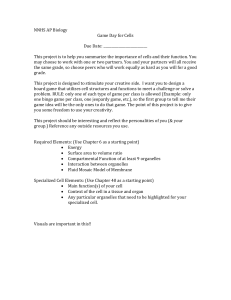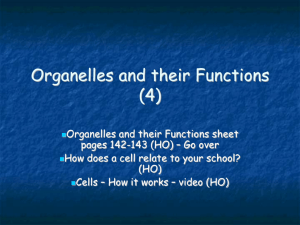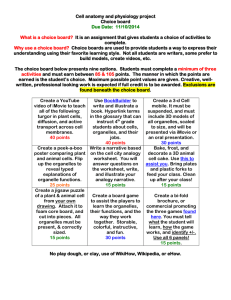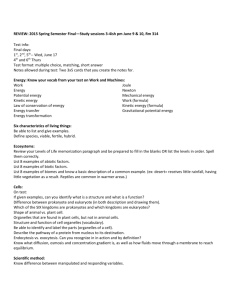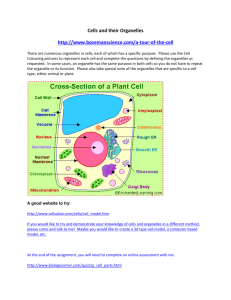Objective Time Frame SWBAT identify major organelles in an animal
advertisement
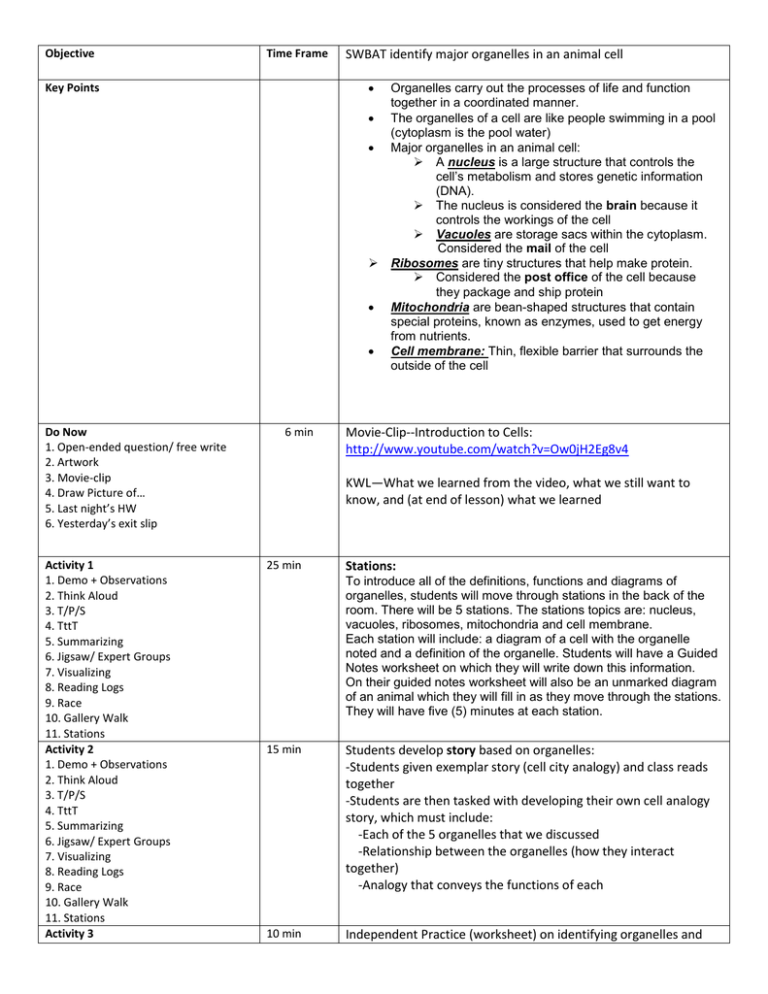
Objective Time Frame SWBAT identify major organelles in an animal cell Key Points Do Now 1. Open-ended question/ free write 2. Artwork 3. Movie-clip 4. Draw Picture of… 5. Last night’s HW 6. Yesterday’s exit slip Activity 1 1. Demo + Observations 2. Think Aloud 3. T/P/S 4. TttT 5. Summarizing 6. Jigsaw/ Expert Groups 7. Visualizing 8. Reading Logs 9. Race 10. Gallery Walk 11. Stations Activity 2 1. Demo + Observations 2. Think Aloud 3. T/P/S 4. TttT 5. Summarizing 6. Jigsaw/ Expert Groups 7. Visualizing 8. Reading Logs 9. Race 10. Gallery Walk 11. Stations Activity 3 6 min Organelles carry out the processes of life and function together in a coordinated manner. The organelles of a cell are like people swimming in a pool (cytoplasm is the pool water) Major organelles in an animal cell: A nucleus is a large structure that controls the cell’s metabolism and stores genetic information (DNA). The nucleus is considered the brain because it controls the workings of the cell Vacuoles are storage sacs within the cytoplasm. Considered the mail of the cell Ribosomes are tiny structures that help make protein. Considered the post office of the cell because they package and ship protein Mitochondria are bean-shaped structures that contain special proteins, known as enzymes, used to get energy from nutrients. Cell membrane: Thin, flexible barrier that surrounds the outside of the cell Movie-Clip--Introduction to Cells: http://www.youtube.com/watch?v=Ow0jH2Eg8v4 KWL—What we learned from the video, what we still want to know, and (at end of lesson) what we learned 25 min Stations: To introduce all of the definitions, functions and diagrams of organelles, students will move through stations in the back of the room. There will be 5 stations. The stations topics are: nucleus, vacuoles, ribosomes, mitochondria and cell membrane. Each station will include: a diagram of a cell with the organelle noted and a definition of the organelle. Students will have a Guided Notes worksheet on which they will write down this information. On their guided notes worksheet will also be an unmarked diagram of an animal which they will fill in as they move through the stations. They will have five (5) minutes at each station. 15 min Students develop story based on organelles: -Students given exemplar story (cell city analogy) and class reads together -Students are then tasked with developing their own cell analogy story, which must include: -Each of the 5 organelles that we discussed -Relationship between the organelles (how they interact together) -Analogy that conveys the functions of each 10 min Independent Practice (worksheet) on identifying organelles and 1. Demo + Observations 2. Think Aloud 3. T/P/S 4. TttT 5. Summarizing 6. Jigsaw/ Expert Groups 7. Visualizing 8. Reading Logs 9. Race 10. Gallery Walk 11. Stations Evaluate Exit Slip Go over Answers + Pack Up their functions 8 min Learning Log


